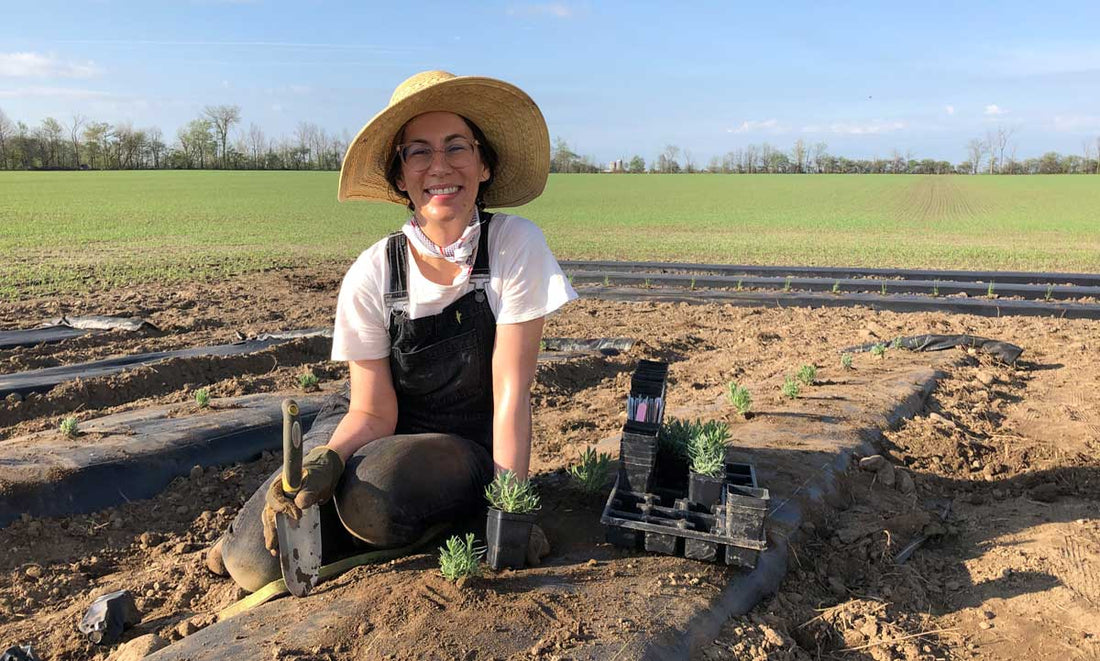
Caring for your NEW lavender plant
So, you have a new lavender plant - yay! But now, you need to keep it alive - ah! - and you've realized you have no idea how to do that. Don't fret. I've gathered my best tips for caring for new lavender plants here.
Location, location, location
Lavender needs to be planted in a full sun location, but most importantly it needs well-draining soil. Sandy or loam soil is best – think raised bed or rock garden.
Lavender doesn’t like to be crowded. It prefers to have lots of space to spread and grow. And hates competition. Lavandula angustifolia plants need about 24” of space and Lavandula x intermedia need about 30-36” of space.
Watering
Although lavender is drought tolerant when established, it does need regular watering when establishing. After planting, be sure to give your plants a thorough soak every three to four days for about two weeks, and then once a week for another month. But, be sure to let the soil fully dry out between waterings. After that it shouldn’t need any extra watering. If you see it "flopping" that's an indicator it needs water ASAP.
Planting in Containers
If you don’t have a garden, you can plant your lavender in large containers. Be sure the container/pot is made of a breathable material and allows for good drainage - think terra cotta with drainage holes. Add some rocks to the bottom of the pot, before adding your soil and plant. Your container lavender will likely need more water throughout the season as containers dry out faster than the ground.
You can treat your plant as an annual and just enjoy it for the summer months, or you can bury your container in the ground for the winter months. This isolates the roots as the weather gets colder and your plant goes into dormancy.
Pruning
If you can bare it, try to cut off any blooms that appear on your plant in the first year. I know, I know. That sucks. But, they need to save their resources and focus on establishing their roots rather than blooms. In the second year of growth, you should prune once or twice a year: a small trim in the spring and a larger prune after its summer bloom. After bloom, cut back a third of the foliage (green leaves). This will help maintain your plant’s shape, while also preventing “woodiness”. Here's a great resource from OMAFRA.
Winter protection
Protect your plants from the harshness of Ontario winters by covering them in late fall. Once the plant has gone a soft green/grey (this means it is now dormant), you can cover with leaves or straw OR a breathable fabric, like burlap. We prefer fabric as it is easy to remove and leaves/straw can trap spring moisture in which lavender DOES NOT like.
Good luck! And let me know if you have any questions.
xo, Stephanie
